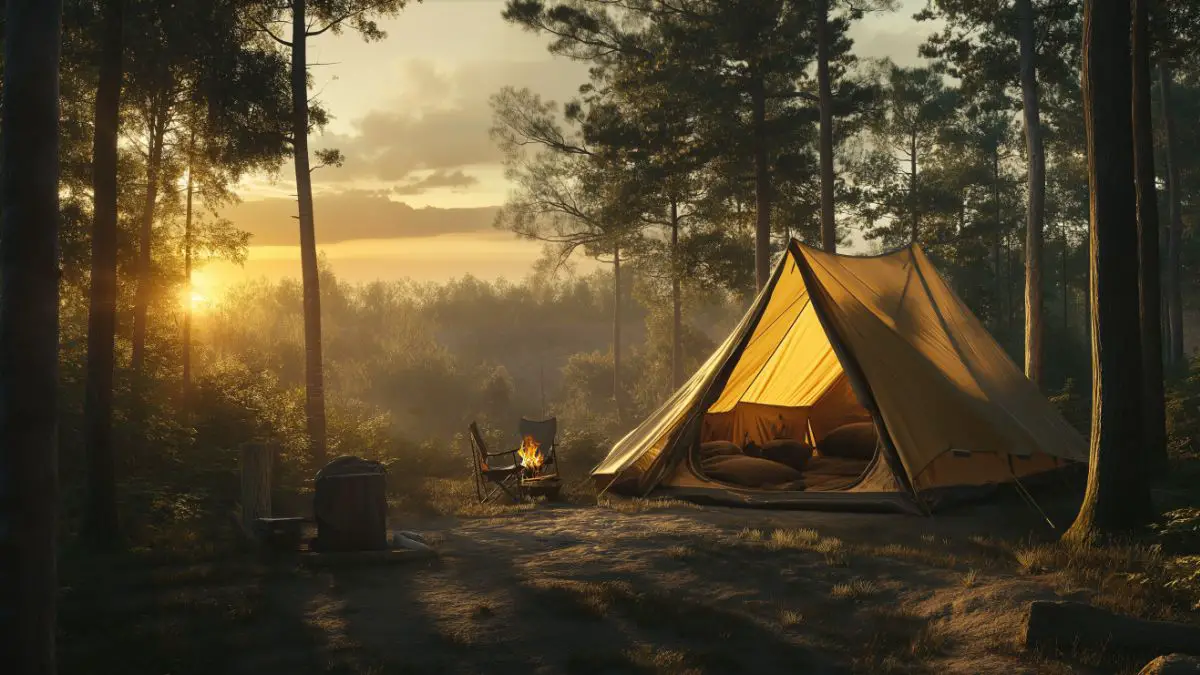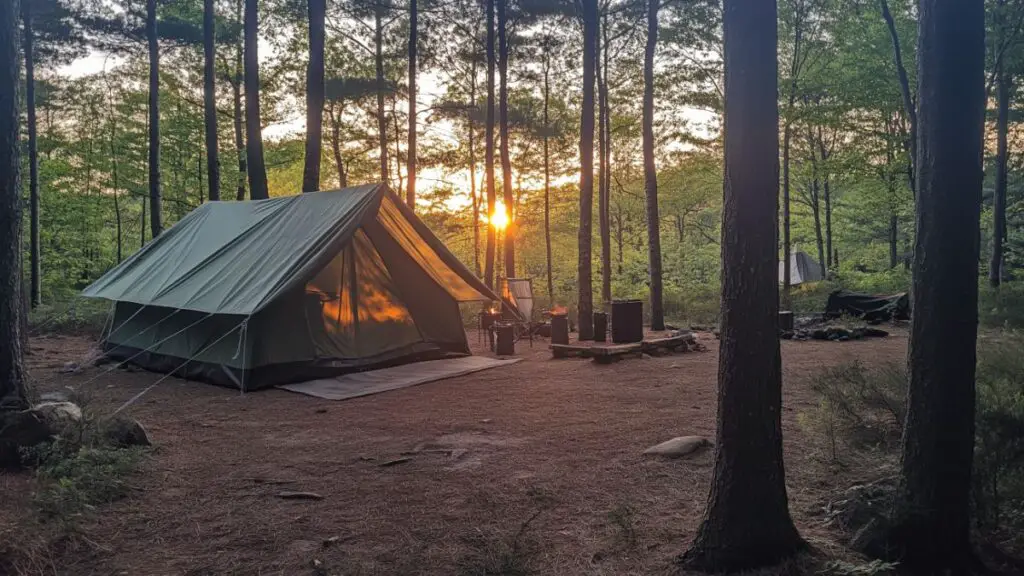Tent Camping Hacks for a Smooth and Comfortable Outdoor Trip
Table of Contents
Introduction
Camping is a beautiful escape from the noise of everyday life—until the zipper sticks, the air mattress deflates, and the fire won’t light. If you’ve ever ended a weekend getaway wishing for more sleep and fewer mosquito bites, you’re not alone. But the good news? A few strategic tent camping hacks can make the difference between surviving and actually enjoying your time in the great outdoors.
According to Kampgrounds of America (KOA), more than 58 million households went camping in 2023, with tent camping being the most popular form of overnight outdoor travel. As more families and solo adventurers embrace camping, there’s a rising interest in comfort-driven, low-stress setups that make roughing it feel a little more like home.
This post is your go-to guide for simple, smart, and stylish tent camping tips to upgrade your outdoor experience. From cozy sleeping arrangements to weatherproofing, packing, and campsite setup, you’ll find practical ideas that prioritize comfort without sacrificing nature’s charm.
In-Depth Outline
1. Choosing the Right Tent and Location
- Pick a tent size that allows extra room for gear and movement.
- Look for waterproof, double-walled tents with ventilation flaps.
- Choose flat, elevated ground to avoid water pooling.
- Face your tent away from the wind to reduce noise and heat loss.
- Use a footprint or tarp beneath the tent to protect the base.
Table: Tent Selection Quick Guide
| Tent Type | Best For | Pros |
|---|---|---|
| Dome Tent | General camping | Easy setup, good wind resistance |
| Cabin Tent | Family trips | High ceiling, roomy interior |
| Backpacking Tent | Solo/light travelers | Compact, lightweight |
2. Smart Sleeping Hacks for Better Rest
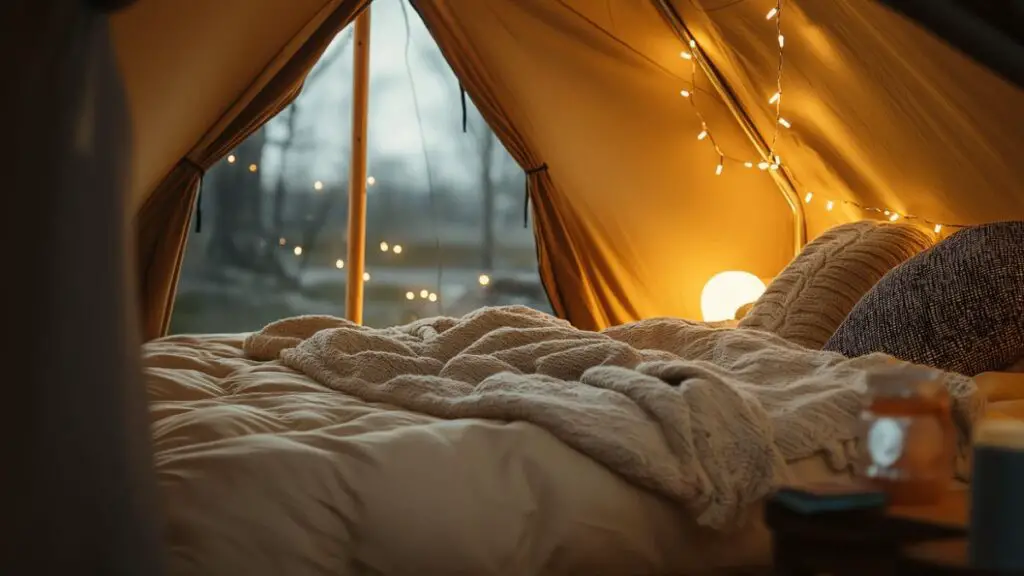
- Use a foam sleeping pad under air mattresses to reduce heat loss.
- Opt for double sleeping bags or zip two together for couples.
- Bring your favorite pillow from home inside a pillowcase-style dry bag.
- Use a fitted sheet over the air mattress for hotel-like comfort.
- Add a wool blanket or yoga mat under your pad for extra insulation.
Table: Sleeping Comfort Upgrades
| Item | Purpose | Bonus Hack |
|---|---|---|
| Foam pad | Blocks cold from ground | Doubles as a yoga mat |
| Pillow from home | Neck support, familiar comfort | Store in dry bag during day |
| Fitted sheet | Improves sleep hygiene and feel | Keeps bedding in place |
3. Organizing Your Campsite Like a Pro
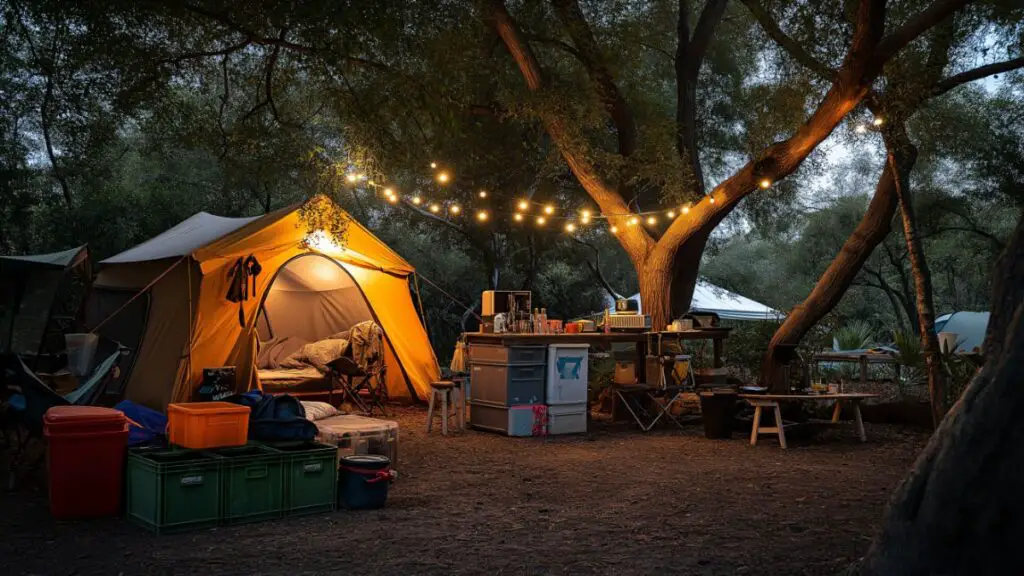
- Designate zones: sleeping, cooking, gear storage, and relaxing.
- Use collapsible bins or crates to separate items by category.
- Hang a shoe rack or mesh organizer on a tree for quick access to essentials.
- Keep a small broom and dustpan inside the tent for quick clean-ups.
- Use glow sticks or solar string lights to light paths at night.
Table: Campsite Organization Checklist
| Zone | Must-Have Items |
|---|---|
| Sleeping | Tent, sleeping bags, lights, clothes bin |
| Cooking | Stove, utensils, cooler, trash bags |
| Gear Storage | Crates, tarps, waterproof containers |
| Lounge | Chairs, hammock, games, citronella candle |
4. Cooking and Food Storage Hacks
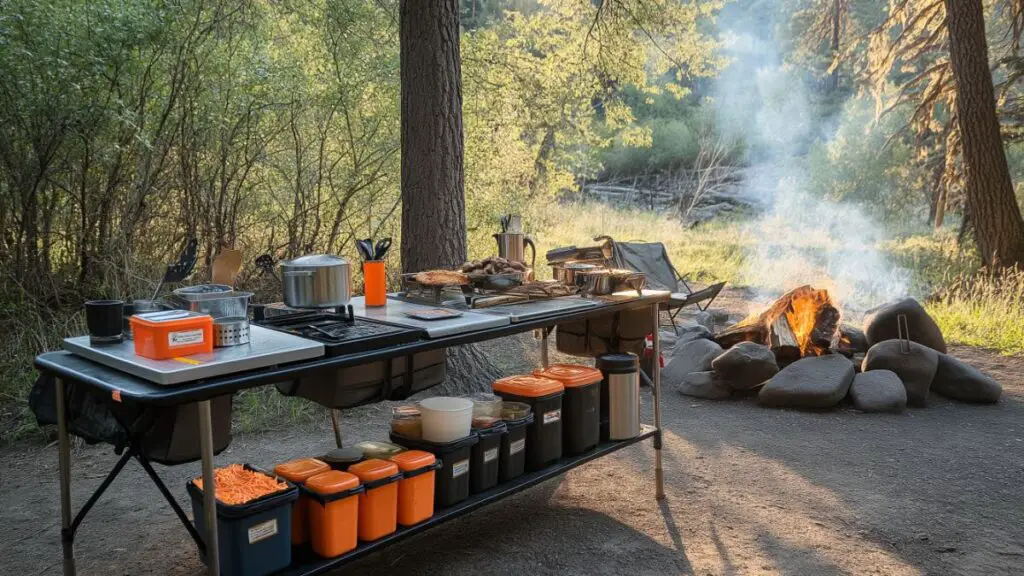
- Freeze meals ahead of time to keep your cooler colder longer.
- Use hanging bear bags or sealed bins to store food away from wildlife.
- Prep ingredients at home in labeled zip bags for quick meals.
- Bring a folding camp kitchen or use a plastic drawer unit for counter space.
- Use an old coffee can with holes to create a mini handwashing station.
Table: Efficient Camp Kitchen Setup
| Food Prep Item | Function | Prep Tip |
|---|---|---|
| Pre-frozen meals | Saves time + keeps cooler cold | Label and stack flat |
| Camp kitchen rack | Provides space + organization | Store knives/tools in slots |
| Hanging soap station | Portable handwash area | Use bungee cords for hanging |
5. Weatherproofing Your Tent Setup
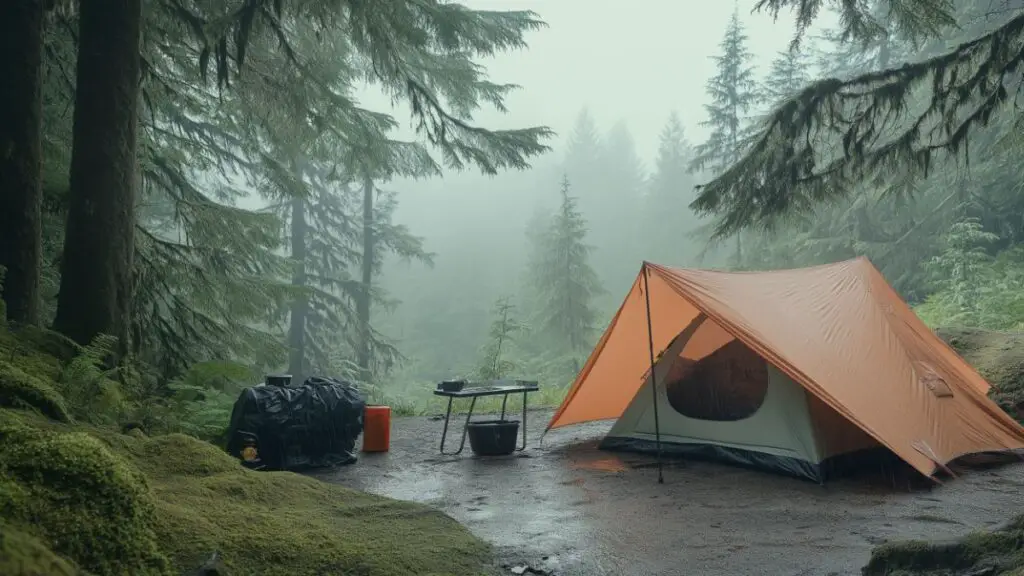
- Bring extra tarps for rainfly coverage and a dry dining space.
- Use tent seam sealer and waterproof spray before your trip.
- Keep a microfiber towel and small rug at the tent entrance.
- Use clothespins and rope to make a fast-drying laundry line.
- Store gear in waterproof bins or dry bags.
Table: Weatherproof Gear Essentials
| Item | Use | Why It Matters |
|---|---|---|
| Tarp | Rain protection, dry zone | Multi-use, compact |
| Dry Bags | Protect clothes and bedding | Lightweight + watertight |
| Entry Rug | Prevents tracking dirt/mud | Adds comfort + cleanliness |
6. Morning and Nighttime Routine Tips
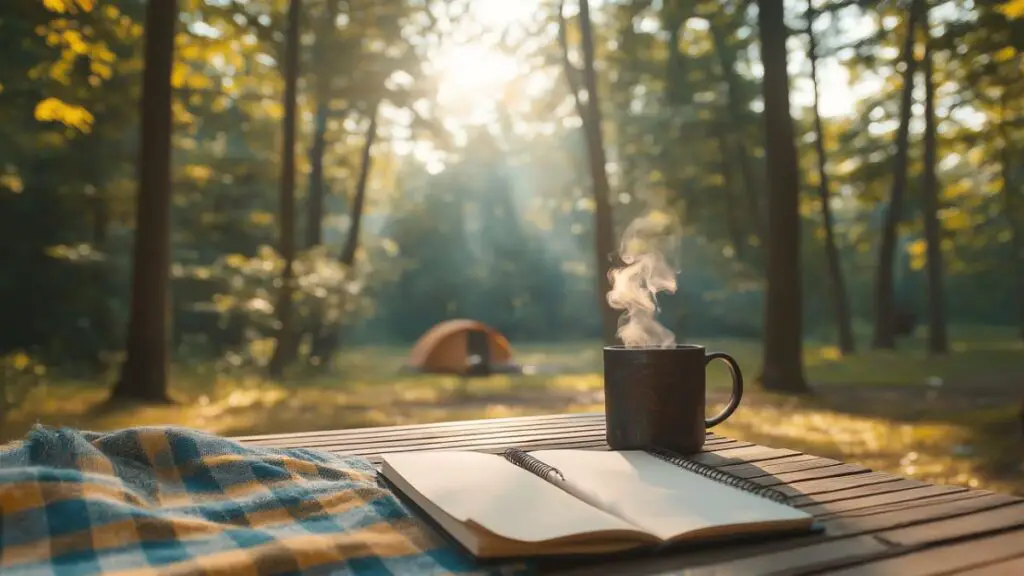
- Keep a headlamp or lantern hung from the tent ceiling.
- Store toiletries in a grab-and-go tote with a mirror and towel.
- Bring a battery-powered fan for hot nights or white noise.
- Use a hot water bottle in your sleeping bag on cool nights.
- Enjoy a morning ritual like pour-over coffee or journaling to start your day grounded.
Table: Camping Routine Must-Haves
| Time of Day | Must-Have Item | Comfort Boost |
|---|---|---|
| Morning | Coffee kit, folding chair | Slow start, scenic views |
| Evening | Fan, cozy socks, book | Wind down with comfort |
| Anytime | Headlamp, wipes, journal | Preparedness + mindfulness |
Detailed Content Expansion
2. Smart Sleeping Hacks for Better Rest
Getting a good night’s sleep while camping doesn’t have to be a challenge. In fact, with a few clever adjustments, your tent sleeping setup can rival a cozy bedroom.
First, place a foam pad or yoga mat beneath your air mattress or sleeping pad. This creates insulation, especially important during chilly nights when the ground leeches body heat. You can even layer two sleeping pads for added softness.
If you’re camping as a couple or family, consider zipping two sleeping bags together or investing in a double-sized one. It prevents cold drafts and offers a more home-like feel. Don’t skimp on pillows—bring your own from home, but store them in a dry bag during transit to keep them fresh.
To level up, use a fitted twin sheet over your sleeping pad or mattress. It not only improves comfort but also keeps blankets in place and elevates the look.
Finally, pack a wool blanket or packable quilt to drape over your sleeping bag on extra cold nights. It makes a huge difference in warmth without bulk.
Table: Sleeping Comfort Upgrades
| Item | Purpose | Bonus Hack |
|---|---|---|
| Foam pad | Blocks cold from ground | Doubles as a yoga mat |
| Pillow from home | Neck support, familiar comfort | Store in dry bag during day |
| Fitted sheet | Improves sleep hygiene and feel | Keeps bedding in place |
4. Cooking and Food Storage Hacks
One of the joys of camping is eating outdoors—but without planning, it can quickly become stressful. The best camp cooks know the secret lies in preparation and smart storage.
Start by prepping meals at home. Dice veggies, season meats, and portion ingredients into labeled zip-top bags or reusable containers. Freeze meals like chili or pasta sauces, which serve double-duty as cooler ice packs.
For cooking on-site, a collapsible camp kitchen table or a plastic drawer unit works wonders for counter space and storage. Keep essentials like utensils, spices, and cookware in designated drawers or containers for easy access.
When it comes to food safety, use hanging food bags or bear-proof containers—especially if you’re camping in wildlife-prone areas. Always store food away from your tent.
As a bonus, turn a large coffee can or 2-gallon water jug into a DIY handwashing station by adding a spigot and hanging soap.
Table: Efficient Camp Kitchen Setup
| Food Prep Item | Function | Prep Tip |
|---|---|---|
| Pre-frozen meals | Saves time + keeps cooler cold | Label and stack flat |
| Camp kitchen rack | Provides space + organization | Store knives/tools in slots |
| Hanging soap station | Portable handwash area | Use bungee cords for hanging |
Conclusion
Camping should be less about struggle and more about savoring the simplicity of nature. With just a few smart tweaks—from comfort-focused sleeping hacks to organized gear and cooking solutions—you can create an outdoor setup that’s both functional and cozy. These tent camping tips help transform a rugged weekend into an enjoyable, comfortable retreat, whether you’re by the lake, in the woods, or simply exploring your own backyard.

